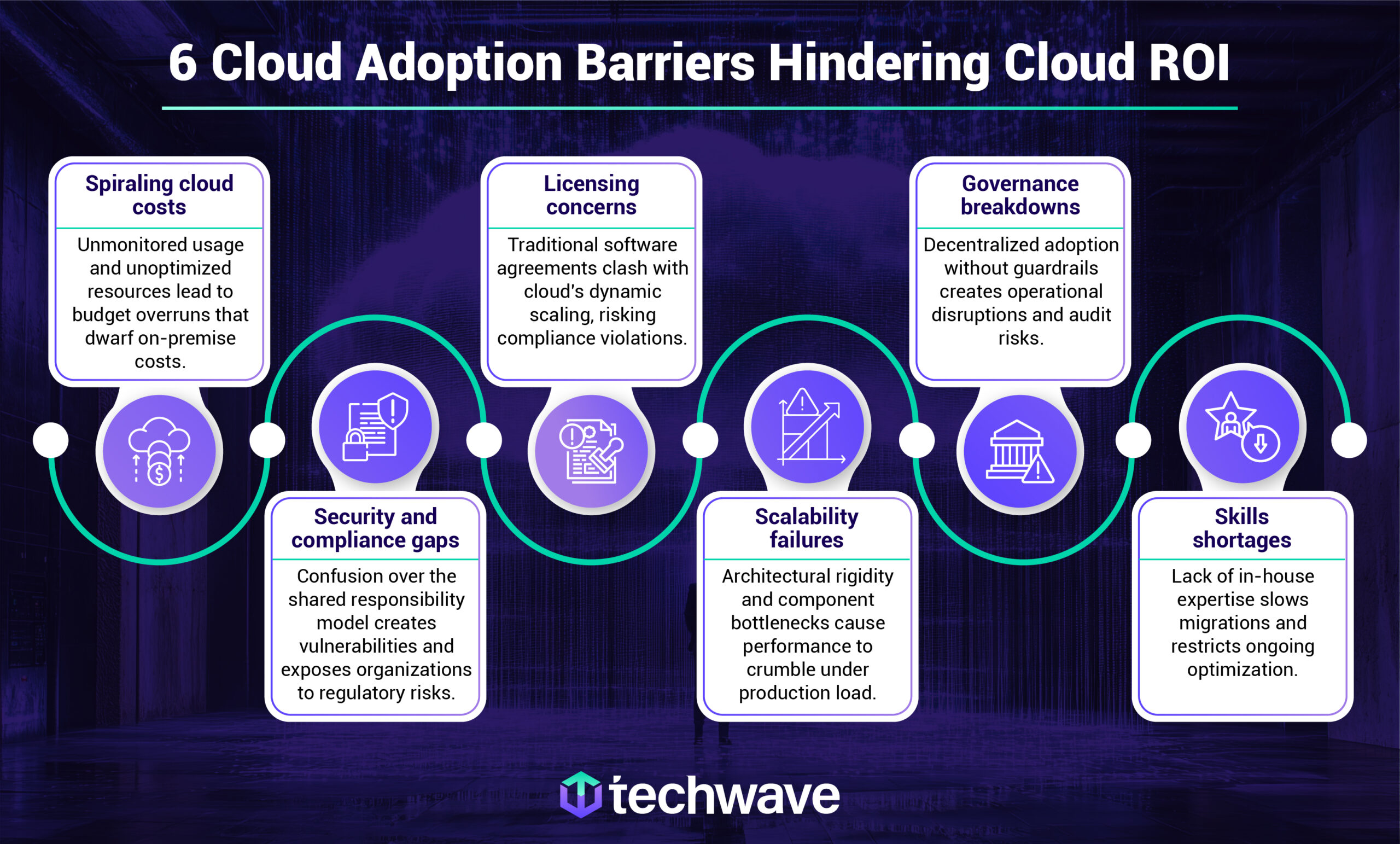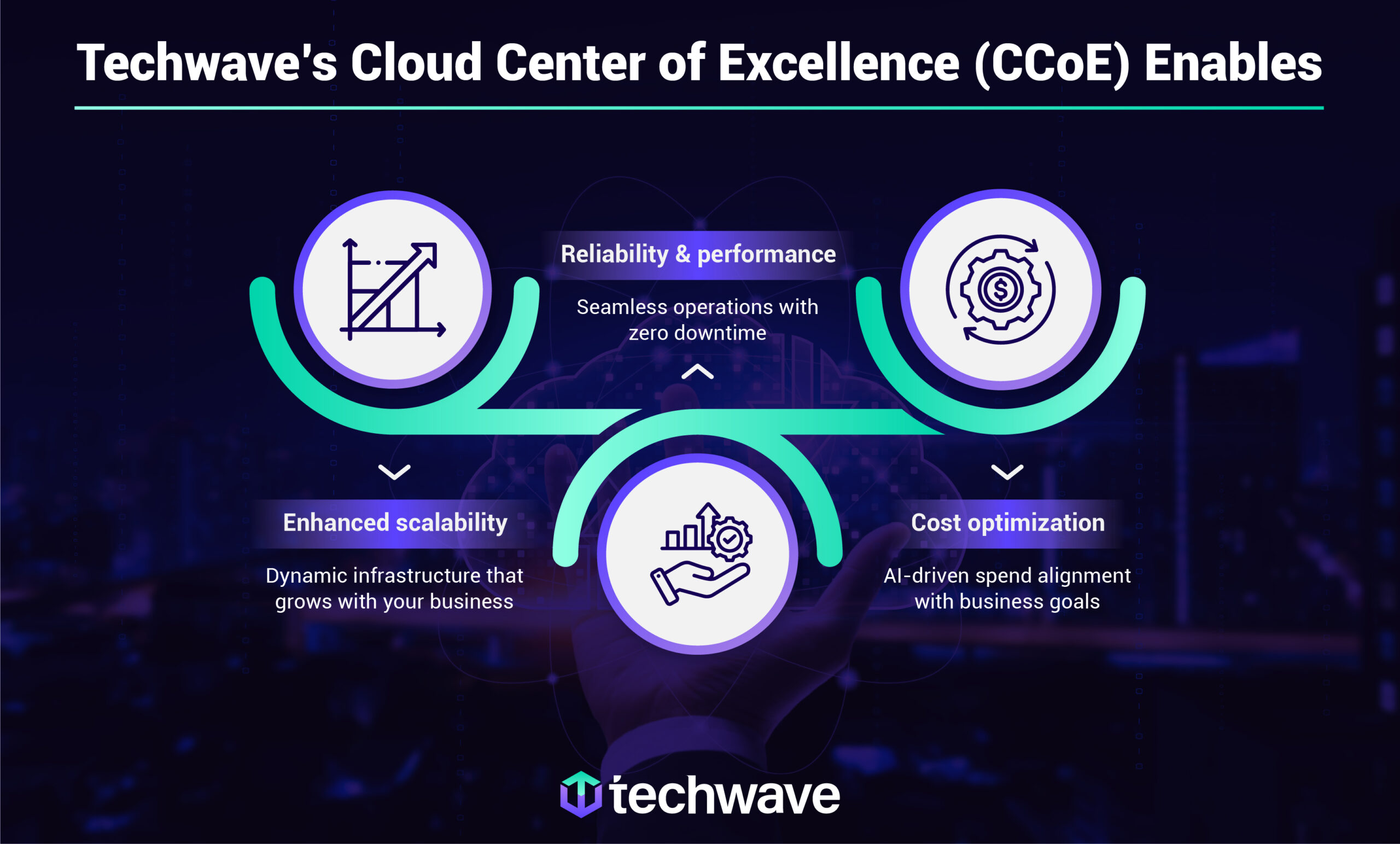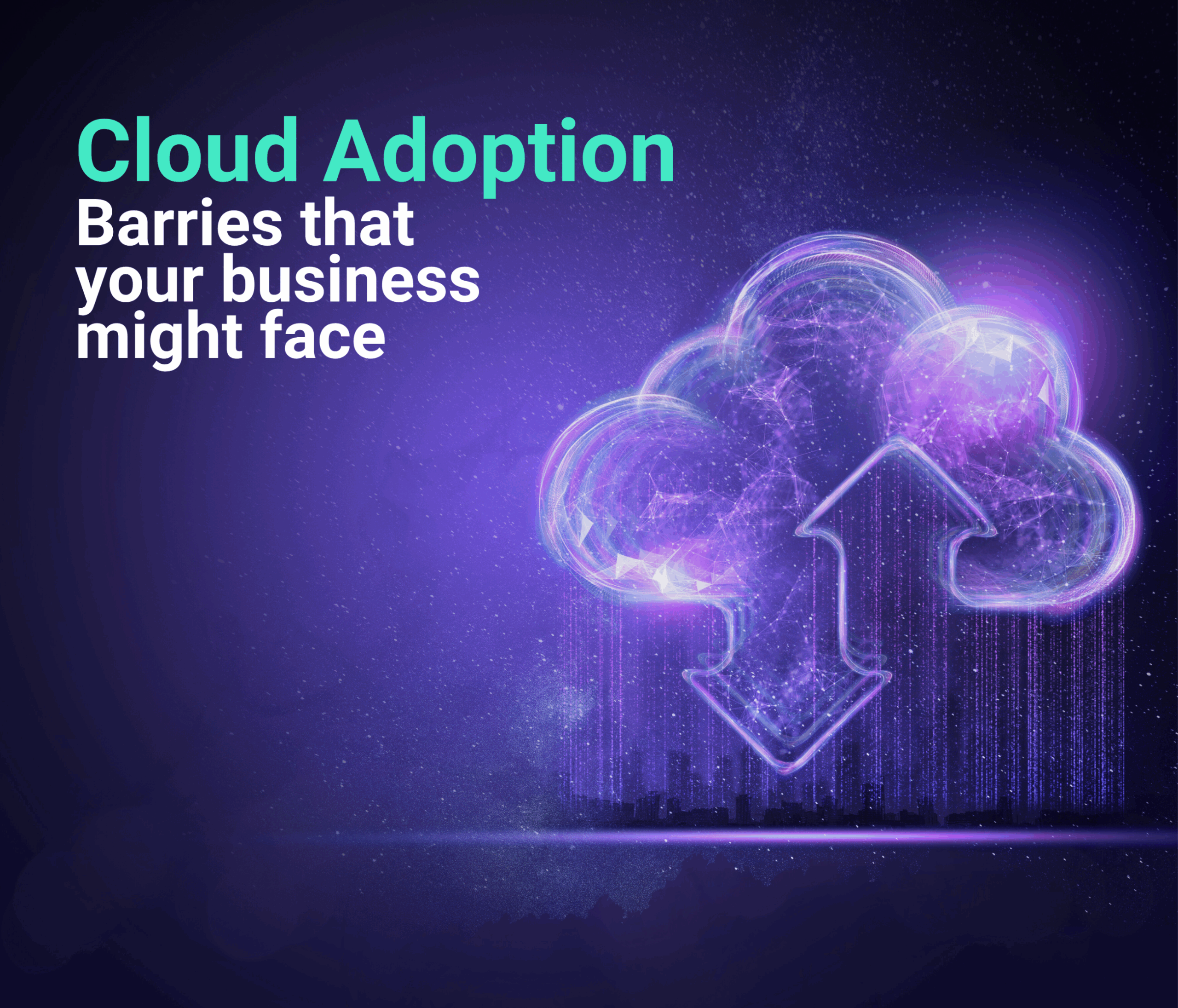6 Major Challenges That Limit Your Cloud Potential (And How to Fix Them)

Contributor:

Madhusudan Y
Associate Director 14.10.2025Reading Time:
7 Minutes
Enterprise cloud management has become the default operating model for modern enterprises. International Data Corporation (IDC) estimates that public cloud investments will reach $1.6 trillion by 2028. Drivers like generative AI, multi-cloud orchestration, and workload modernization are pushing IT teams to move faster than ever. Yet despite all the momentum, most organizations admit a hard truth: cloud adoption often fails to deliver its promised value.
The reason isn’t that cloud technology underperforms. It’s that the transition to cloud is not just about moving applications – it’s about fundamentally rethinking how technology is built, governed, secured, financed, and operated. Enterprises that treat clouds merely as a new hosting environment often find themselves overspending, underutilizing, and struggling to scale.
This blog explores the six most common barriers that silently erode cloud ROI — and, more importantly, how to fix them to build a foundation for long-term success.
What are the biggest barriers to cloud adoption for enterprises?
The 2025 State of the Cloud Report by Flexera identifies six critical issues that undermine effective cloud execution. These are the silent blockers that creep in as usage scales. They may not show up in your RFP, but they will show up in your monthly bills, security posture, and project delays if left unaddressed.
In this blog, we’ll draw insights from Flexera’s findings and a supporting McKinsey study to illustrate why these barriers persist and how enterprises can overcome them to realize true cloud value.

1. The Cost Conundrum: Cloud Economics Without Clarity
It often starts with good intentions. A team builds environments for development and testing, eager to move fast, and another deploys cloud storage for backups and data sharing. Then, marketing rolls out a new analytics stack for campaign performance. At first, everything appears agile and smoothly, until the first invoice arrives, and finance realizes the bill has far exceeded projections.
The Flexera report shows that 84% of enterprises now consider cost management their top cloud challenge. The problem isn’t that cloud is inherently expensive. It’s that cost is dynamic, difficult to predict, and hard to attribute without disciplined governance.
Cloud services scale on demand, but so do costs. When no one’s watching, even a minor misconfiguration can result in thousands of dollars wasted on idle resources, oversized instances, or unoptimized storage tiers.
The problem becomes worse during migration. Many workloads are lifted and shifted as-is without optimization. Legacy applications may run inefficiently in a virtualized cloud environment, consuming more CPU or storage than necessary. And because cloud pricing is dynamic, it’s easy to overlook hidden costs like data egress or inter-region traffic.To shift from reactive to proactive cost management:
- Build a FinOps discipline early, with shared ownership across engineering, finance, and operations.
- Enforce resource tagging policies to enable meaningful chargeback and show back.
- Automate shutdowns and instance right-sizing using cloud-native policies or third-party tools to prevent waste.
- Forecast spending based on usage trends and set hard budget alerts to avoid overages.
The goal isn’t just to reduce spending. It’s to make cloud economics transparent, predictable, and tied to business value.
The goal is not just reducing costs — it’s aligning cloud economics with business outcomes, making every dollar spent traceable, predictable, and value-driven.
2. The Trust Deficit: Security and Compliance by Design
Cloud security is a business risk, a legal obligation, and a trust issue rolled into one. In Flexera’s report, 77% of leaders identified security and compliance as a critical barrier to adoption. This isn’t because the cloud environments are less secure. In fact, leading cloud providers often exceed the security capabilities of on-premise data centers. The challenge is in the shared responsibility model, which many organizations still struggle to navigate.
Here’s a common scenario: A team moves sensitive data to a cloud bucket but forgets to configure encryption. Another deploys an application across regions without understanding local data residency requirements. Someone grants over-permissive access to a third-party service for the sake of speed, but now audit logs are compromised.
Security risks tend to surface during migration when speed is prioritized over scrutiny. Workloads are rehosted without being re-architected for zero-trust models. Identity and access management are bolted on rather than designed in. Worse, the controls that existed in the old environment don’t map neatly to the new one. To build cloud environments that are secure by design:
- Start with data classification: understand what’s sensitive, where it lives, and how it moves.
- Adopt a zero-trust security model across networks and identities: assume breach and validate every request.
- Integrate compliance-as-code into CI/CD pipelines to enforce policies before deployment.
- Use native monitoring tools like AWS GuardDuty or Azure Policy for continuous posture management and rapid remediation.
In short, security in the cloud isn’t a phase but a foundational practice that must be embedded at every step: design, deployment, and operation.
3. The Licensing Labyrinth: Old Rules, New Reality
Software licensing may seem like a back-office detail, but it routinely causes front-line delays. According to Flexera, 75% of enterprises cite license management as a core challenge.
Legacy licensing models were designed for static, on-prem environments. They break down when infrastructure scales elastically or spans multiple cloud providers. An enterprise might move a licensed database to the cloud only to find that its physical CPU-based licensing no longer applies. Or user-based licensing models become murky when apps run in serverless or containerized environments.
This issue worsens in multi-cloud environments, where each provider has distinct licensing frameworks and portability rules. Without a strategy in place, many companies find themselves either overpaying or inadvertently under-licensed, both of which create risk.
To avoid licensing becoming the hidden drain on cloud ROI:
- Conduct a comprehensive license inventory before migrating workloads.
- Negotiate cloud-optimized agreements, such as subscription, SaaS, or user-based.
- Deploy Software Asset Management (SAM) platforms with integrations across major cloud platforms, like AWS, Azure, and GCP, to track usage against entitlements.
- Build a licensing strategy into cloud architecture and opt for PaaS or SaaS alternatives where possible.
The dynamic nature of the cloud necessitates building a licensing strategy that’s flexible as well as automated.
4. The Scaling Trap: Performance Without Architecture
Cloud promises infinite scalability — but that promise often breaks in practice. Applications designed for fixed, predictable infrastructure struggle in dynamic, distributed environments. According to McKinsey & Company, the world will require $6.7 trillion in data center investments by 2030 to meet compute demand, yet many enterprises still grapple with latency, outages, and resource contention after migration.
The reason: scalability is not automatic. Without refactoring apps for statelessness, decoupling, and elasticity, scaling one layer can create bottlenecks in another. Auto-scaling front-end servers won’t help if the database remains a fixed-capacity choke point.
So, the challenge is not that cloud infrastructure is unreliable. The real issue is managing the ripple effect of scale
A simple increase in front-end traffic can overwhelm a poorly configured database connection pool. An auto-scaling group might spin up new web servers correctly, but if the underlying database isn’t scaled in tandem, it becomes a single point of failure. This interdependency between application components, network limits, and data tiers is where scalability plans often break down.
To build cloud environments that deliver consistent performance:
- Leverage a multi-cloud strategy to balance workloads across providers – helps in optimizing for cost and avoiding vendor-specific limitations.
- Automate deployment and configuration through DevOps practices and CI/CD pipelines to enable rapid, reliable scaling.
- Build elastic architecture using stateless components, microservices, and serverless designs to enable independent scaling of components.
- Implement deep observability to monitor application dependencies and data layers, identifying bottlenecks like database contention before they cause outages.
- Right-size resources and leverage managed services to eliminate bottlenecks and ensure efficient scaling for every component.
In short, scalability is a design outcome, not a default setting. It is achieved not by having access to more resources, but by having architecture that can seamlessly and efficiently use them.
5. The Governance Gap: Freedom Without Guardrails
Cloud success is built on speed — but unmanaged speed leads to chaos. Over time, organically grown infrastructure without consistent policies leads to cost sprawl, shadow IT, compliance drift, and operational risk.
Flexera reports that 75% of organizations struggle with cloud governance. It’s easy to understand why. Without policies in place, resources are provisioned without naming conventions, cost centers go untracked, and sensitive data might be exposed due to misconfigured access. Then come the audit gaps, inconsistent environments, and compliance violations that result from too much freedom and not enough structure.
The problem is not just technical; it’s organizational. Governance in the cloud requires cross-functional coordination between IT, finance, security, and business. Waiting until something goes wrong is too late.
To create governance that scales with the cloud:
- Establish a Cloud Center of Excellence (CCoE) with representatives from IT, security, finance, and business units.
- Define standards for naming, tagging, access control, and environmental lifecycle management.
- Apply policy-as-code to enforce rules automatically, such as denying public storage, enforcing encryption, and blocking untagged resources.
- Schedule regular reviews of governance metrics, like compliance drift, orphaned assets, and access violations.
Good governance doesn’t slow you down — it enables you to scale confidently, securely, and in alignment with business strategy.
6. Skill Shortage: Cloud Talent as a Strategic Asset
The final — and perhaps most pervasive — barrier is talent. Flexera found that 75% of enterprises report a lack of in-house expertise as a core challenge. It’s not surprising. The skill sets required to build and manage cloud environments differ substantially from those used to run traditional infrastructure.
Most teams aren’t starting from scratch. They’re managing existing systems while trying to learn new ones. That creates a capability gap.
There may be one DevOps engineer fluent in Kubernetes, but not enough architects who understand multi-region deployment strategies, cost-aware design principles, or the compliance implications of cloud-native databases.
During migration, this manifests as bottlenecks, overreliance on inexperienced teams/individuals, or stalled initiatives. And once workloads are in the cloud, the lack of expertise hinders optimization and innovation.
To close the cloud talent gap:
- Invest in role-based training and certifications mapped to real project milestones.
- Launch internal cloud apprenticeships that rotate traditional IT staff through cloud delivery teams.
- Build cloud communities of practice for sharing patterns, pitfalls, and progress across teams.
- Leverage external experts during critical migrations, with a clear mandate to transfer knowledge, not just deliver output.
Clearly, cloud adoption is not just about selecting a provider or moving workloads. It demands strong systems across finance, operations, and technology that support scalability, control, security, and long-term efficiency. These are not unsolvable problems.
With the right structure, skilled teams, and expert guidance, they become opportunities to improve how the business runs.
Turning Challenges into Competitive Advantage
Overcoming these six barriers isn’t about solving isolated problems — it’s about building a strategic cloud foundation where cost, security, scalability, governance, licensing, and talent reinforce one another.
Techwave partners with enterprises to do exactly that. Our cloud services combine FinOps discipline, secure-by-design architecture, license optimization, policy-driven governance, and capability-building programs to ensure your cloud transformation delivers measurable impact.

Our experts embed with your teams, turning migration into upskilling opportunities so you gain long-term independence, not just short-term results, while our Cloud Center of Excellence (CCoE) helps you leverage the full potential of cloud investments, blending strategy, execution, and AI-powered insights.
Ready to unlock the full value of your cloud investments?
Looking to make your cloud adoption purposeful, practical, and ready for what’s next? Visit our website today to navigate your cloud adoption journey at every stage, from advisory services to ongoing management and support.




